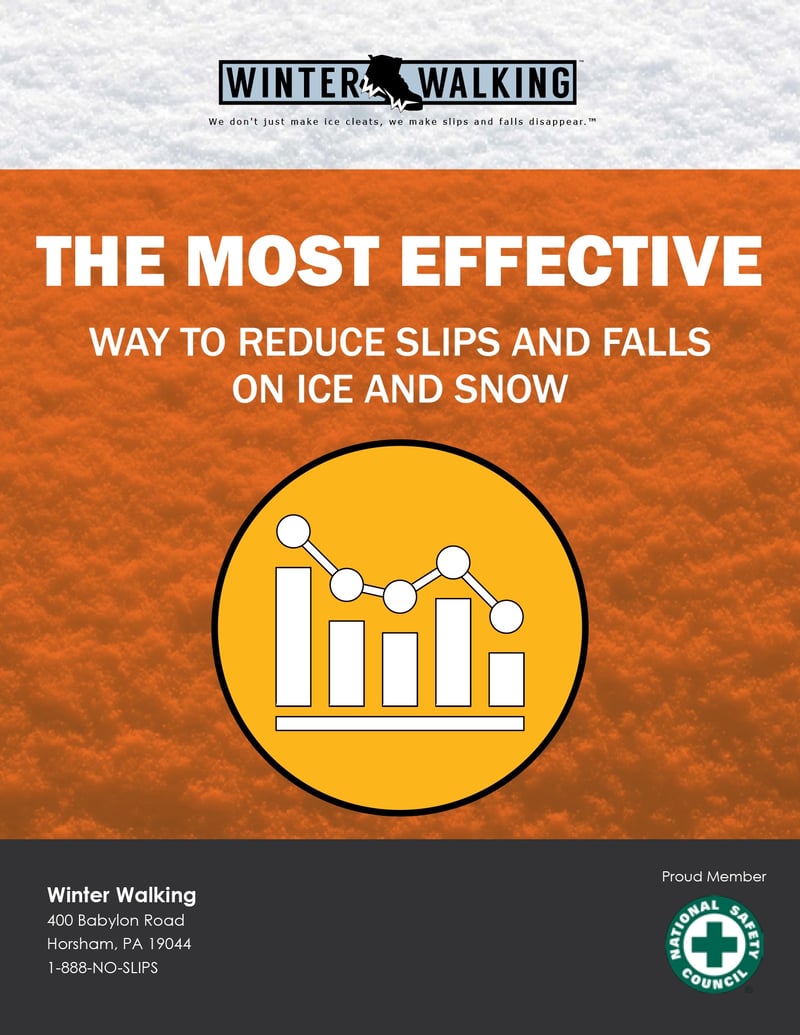 Winter is just around the corner, and with it comes a whole host of hazards that can pose a threat to the safety of your employees. As a responsible employer, it is crucial to start planning now to ensure the well-being of your staff and maintain a strong safety record for your company.
Winter is just around the corner, and with it comes a whole host of hazards that can pose a threat to the safety of your employees. As a responsible employer, it is crucial to start planning now to ensure the well-being of your staff and maintain a strong safety record for your company.
One important aspect to consider when preparing for winter is providing your employees with the necessary equipment to prevent slips and falls on ice and snow. Industrial ice cleats and other winter traction aids can be incredibly effective in reducing the risk of accidents. However, before making a purchase, it is essential to evaluate your priorities and requirements.
When it comes to choosing ice cleats, there are several important features to consider. Price is often a key factor, as it is important to find a product that fits within your budget. Durability is also crucial, as you want to invest in cleats that will last throughout the winter season. Ease of use is another consideration, as you want a product that is simple and straightforward for your employees to put on and take off. Additionally, think about whether the cleats are suitable for indoor use, as some workplaces may require employees to transition between indoor and outdoor areas. Finally, consider whether the cleats are safe for driving, as some employees may need to operate vehicles as part of their job duties.
In terms of providing ice cleats, you may need to assess whether all employees require them or if they should be provided only to specific individuals or departments. This will depend on the nature of your business and the level of exposure to icy conditions. By carefully evaluating the level of risk and determining who needs the cleats, you can ensure that resources are allocated efficiently and that everyone who needs them has access to them.
Another critical factor to consider is the condition of your parking lots during the winter months. Icy parking lots can pose a significant risk to both pedestrians and drivers, increasing the chances of accidents and injuries. It is essential to evaluate the extent of this concern and take the necessary measures to ensure the safety of everyone on your premises. This may involve hiring professional snow removal services, applying ice-melting agents, or implementing regular maintenance and inspection routines.
Budgetary Considerations
Budgetary considerations are also important when it comes to purchasing ice cleats. It is essential to determine whose budget will cover the expenditure and plan accordingly. By being proactive in financial planning, you can ensure that the necessary funds are available when needed and that there are no delays in providing the necessary safety equipment to your employees.
Once you have chosen the appropriate ice cleats or traction safety footwear, it is crucial to plan ahead for their distribution. Consider the delivery lead time for the product, as it can vary depending on the supplier. Allow ample time for the delivery process, including any potential size exchanges that may be required. This will ensure that your employees have the cleats well in advance of when they are needed, minimizing the risk of accidents and injuries.
Moreover, training your employees on how to use the ice cleats properly is essential to maximize their effectiveness. Plan for training sessions or workshops to educate your staff on the correct usage and maintenance of the cleats. This will help them understand how to use the equipment safely and reduce the risk of accidents. It is important to emphasize proper techniques for putting on and taking off the cleats, as well as how to maintain them to ensure their longevity and effectiveness.
By addressing these considerations and taking the necessary steps early, you can better prepare for the winter hazards and create a safer workplace environment. By reducing slips and falls, you not only protect your employees but also contribute to a more productive and efficient workforce. Prioritizing the safety of your employees is an investment in their well-being and the success of your business. So, start planning now to ensure a safe and productive winter season for all.
Thank you for reading. If you found value in this post, please consider sharing it with your LinkedIn network or simply “like” it.Bill Coyne is the VP of Sales for Winter Walking. He has been helping organizations across a wide variety of business sectors prevent workplace slips and falls in ice and snow for over 25 years. Winter Walking currently helps some of the world’s largest organizations keep their employees both safer and more productive while working outdoors in the winter season. Contact bill@winterwalking.com or visit www.winterwalking.com.











